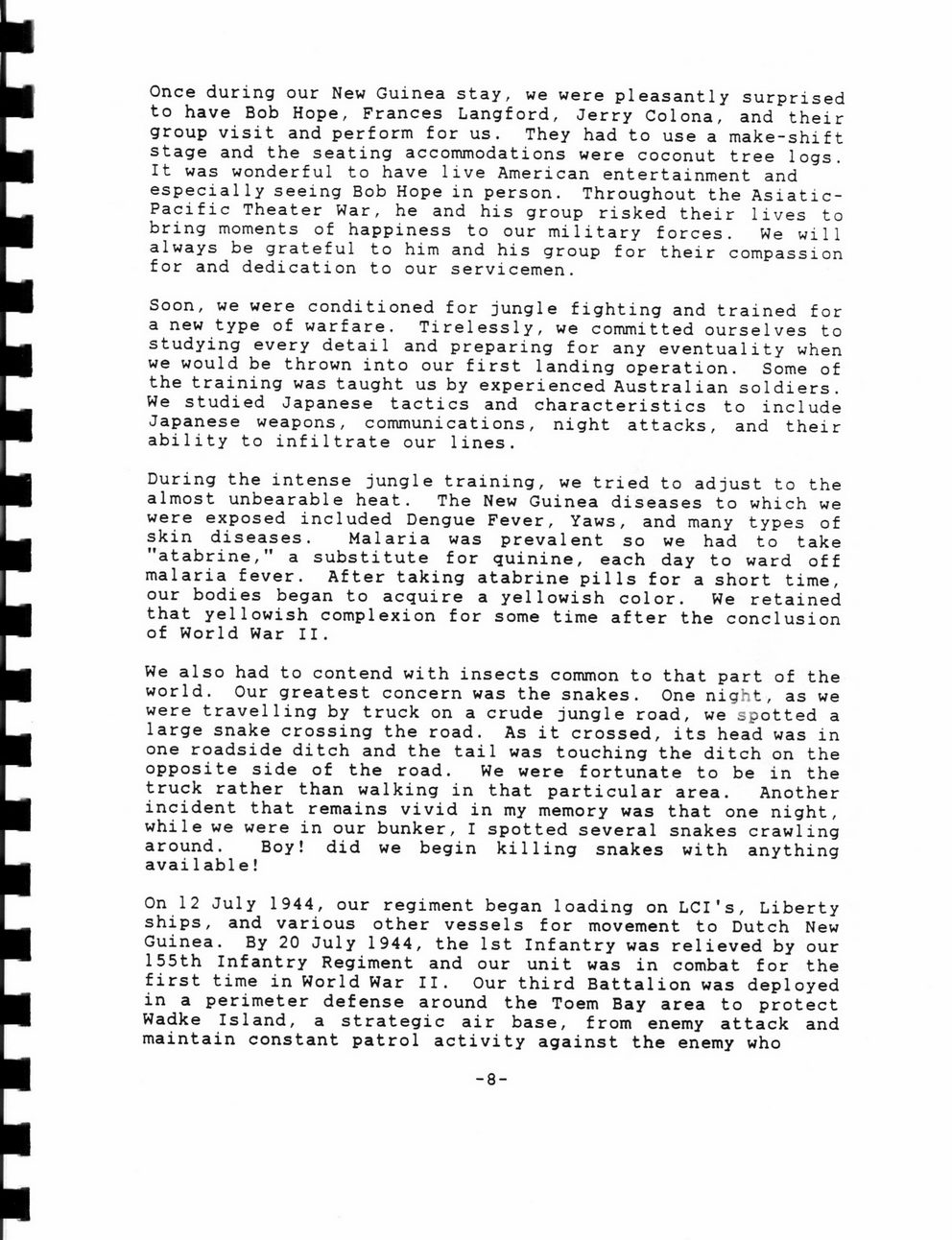This text was obtained via automated optical character recognition.
It has not been edited and may therefore contain several errors.
Once during our New Guinea stay, we were pleasantly surprised to have Bob Hope, Frances Langford, Jerry Colona, and their group visit and perform for us. They had to use a make-shift stage and the seating accommodations were coconut tree logs. It was wonderful to have live American entertainment and especially seeing Bob Hope in person. Throughout the Asiatic-Pacific Theater War, he and his group risked their lives to bring moments of happiness to our military forces. We will always be grateful to him and his group for their compassion for and dedication to our servicemen. Soon, we were conditioned for jungle fighting and trained for a new type of warfare. Tirelessly, we committed ourselves to studying every detail and preparing for any eventuality when we would be thrown into our first landing operation. Some of the training was taught us by experienced Australian soldiers. We studied Japanese tactics and characteristics to include Japanese weapons, communications, night attacks, and their ability to infiltrate our lines. During the intense jungle training, we tried to adjust to the almost unbearable heat. The New Guinea diseases to which we were exposed included Dengue Fever, Yaws, and many types of skin diseases. Malaria was prevalent so we had to take "atabrine," a substitute for quinine, each day to ward off malaria fever. After taking atabrine pills for a short time, our bodies began to acquire a yellowish color. We retained that yellowish complexion for some time after the conclusion of World War II. We also had to contend with insects common to that part of the world. Our greatest concern was the snakes. One night, as we were travelling by truck on a crude jungle road, we spotted a large snake crossing the road. As it crossed, its head was in one roadside ditch and the tail was touching the ditch on the opposite side of the road. We were fortunate to be in the truck rather than walking in that particular area. Another incident that remains vivid in my memory was that one night, while we were in our bunker, I spotted several snakes crawling around. Boy! did we begin killing snakes with anything avai1able! On 12 July 1944, our regiment began loading on LCI's, Liberty ships, and various other vessels for movement to Dutch New Guinea. By 20 July 1944, the 1st Infantry was relieved by our 155th Infantry Regiment and our unit was in combat for the first time in World War II. Our third Battalion was deployed in a perimeter defense around the Toem Bay area to protect Wadke Island, a strategic air base, from enemy attack and maintain constant patrol activity against the enemy who

Nelson From-Mississippi-to-Mindanao-Autobiography-of-Virgil-E-Nelson-part24